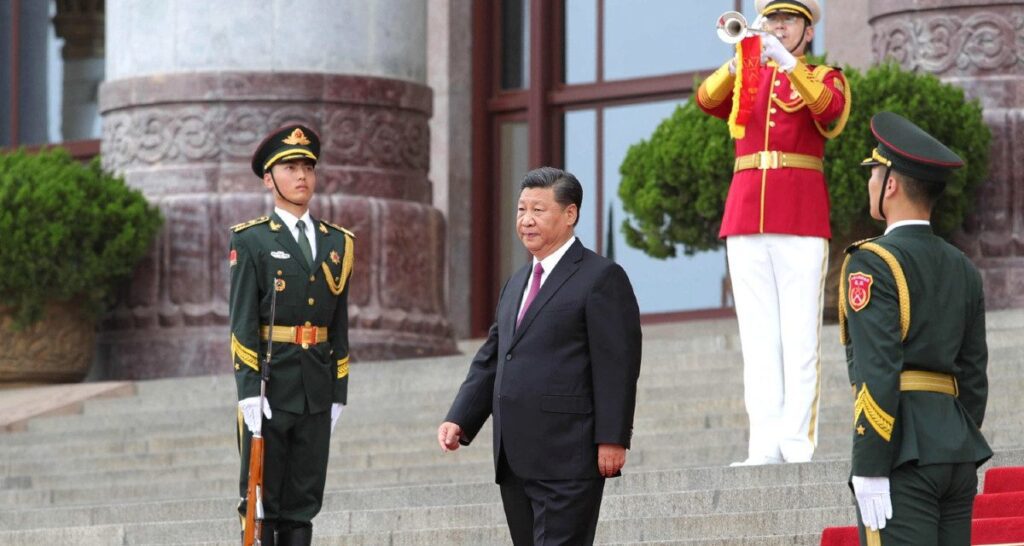This introduction provides a brief overview of guerrilla warfare, focusing on its tactics and strategies. It explains that guerrilla warfare is an unconventional form of warfare used by smaller forces against larger opponents. The article explores various tactics, such as hit-and-run attacks, ambushes, and raids, as well as the use of hideouts and underground networks. The strategies of attrition, psychological warfare, and mobilization of popular support are also discussed. The introduction concludes by mentioning the application of guerrilla warfare principles in the digital age, specifically through cyber guerrilla warfare and social media information warfare. It emphasizes the importance of adaptability and resourcefulness in unleashing the power of guerrilla warfare.
Unleashing the Power of Guerrilla Warfare: Tactics and Strategies
Introduction
Guerrilla warfare is a type of unconventional warfare that involves small, independent groups of combatants using military tactics such as ambushes, sabotage, and raids to achieve their objectives. Historically, guerrilla warfare has been employed by weaker forces against stronger opponents, utilizing their agility, adaptability, and knowledge of the local terrain to level the playing field. In recent years, the concept of guerrilla warfare has evolved to include non-violent forms of resistance as well, such as cyber warfare. In this article, we will explore the tactics and strategies behind guerrilla warfare, and how they can be applied in various contexts.
Tactics of Guerrilla Warfare
Hit-and-Run Tactics
One of the key tactics employed in guerrilla warfare is the hit-and-run strategy. This involves launching surprise attacks against the enemy and then quickly retreating before they can mount an effective counterattack. This tactic serves multiple purposes, including demoralizing the enemy, conserving resources, and avoiding direct confrontation with a superior force. Hit-and-run tactics can be particularly effective when implemented by small agile units that can strike and disappear into the surrounding landscape.
Ambushes and Raids
Another important tactic in guerrilla warfare is the use of ambushes and raids. Guerrilla fighters often set up carefully planned ambushes, waiting for the enemy to pass through a vulnerable area, and then striking with precision and speed. This tactic not only causes immediate casualties but also creates fear and uncertainty within the enemy ranks, making them hesitant and paranoid. Raids, on the other hand, involve conducting surprise attacks on enemy installations or supply lines, disrupting their operations and inflicting damage.
Hideouts and Underground Networks
Guerrilla fighters rely heavily on hideouts and underground networks to survive and operate effectively. These networks are designed to provide safe havens for fighters, allowing them to rest, regroup, and plan their next moves. Hideouts can be located deep within the jungles, mountains, or urban areas, providing cover from aerial reconnaissance and direct attacks. Underground networks, on the other hand, involve a complex system of communication and support, enabling fighters to share intelligence, supplies, and recruits while remaining elusive to the enemy.
Strategies of Guerrilla Warfare
Attrition
A common strategy employed by guerrilla fighters is attrition, wearing down the enemy through a series of small-scale attacks. By inflicting constant casualties and keeping the enemy in a state of perpetual unrest, guerrilla fighters can erode their morale, drain their resources, and ultimately force them to withdraw or negotiate. This strategy requires patience, persistence, and a deep understanding of the enemy’s vulnerabilities.
Psychological Warfare
Psychological warfare is a crucial component of guerrilla warfare, aiming to disrupt the enemy’s psychological state and create a sense of fear, paranoia, and hopelessness. This can be achieved through various means, such as spreading rumors, conducting propaganda campaigns, and executing high-profile acts of violence. By manipulating the enemy’s perception and sowing discord within their ranks, guerrilla fighters can weaken their resolve and make them more susceptible to defeat.
Mobilization of Popular Support
Unlike conventional warfare, guerrilla warfare relies heavily on the support and cooperation of the local population. This strategy involves winning the hearts and minds of the people, gaining their trust, and mobilizing them to provide intelligence, supplies, and recruits. By engaging in community development projects, providing healthcare, and addressing the needs of the population, guerrilla fighters can build a strong support network that acts as a force multiplier.
Application of Guerrilla Warfare Principles in the Digital Age
Cyber Guerrilla Warfare
With the rapid advancement of technology, guerrilla warfare has expanded into the digital realm. Cyber guerrilla warfare involves using computer-based tactics to disrupt, disable, or infiltrate enemy systems. This can be done through hacking, spreading misinformation, conducting DDoS attacks, or infiltrating online networks. Just like traditional guerrilla warfare, cyber guerrilla fighters operate in small, decentralized cells, making it difficult for the enemy to track and neutralize them.
Social Media and Information Warfare
In the era of social media, guerrilla tactics can be effectively employed to wage information warfare. By leveraging social media platforms, guerrilla fighters can spread their message, challenge the narratives of their opponents, and mobilize public opinion in their favor. This strategy involves creating viral content, organizing online protests, and engaging in online debates to shape public perception and gain support for their cause.
Conclusion
Guerrilla warfare has proven to be a formidable strategy throughout history, enabling weaker forces to stand against stronger opponents. The tactics and strategies employed by guerrilla fighters, both in traditional and modern contexts, highlight the importance of adaptability, resourcefulness, and the ability to exploit the vulnerabilities of the enemy. By understanding and utilizing the principles of guerrilla warfare, individuals and groups can unleash the power of asymmetrical warfare to achieve their objectives, even in the face of overwhelming odds.
